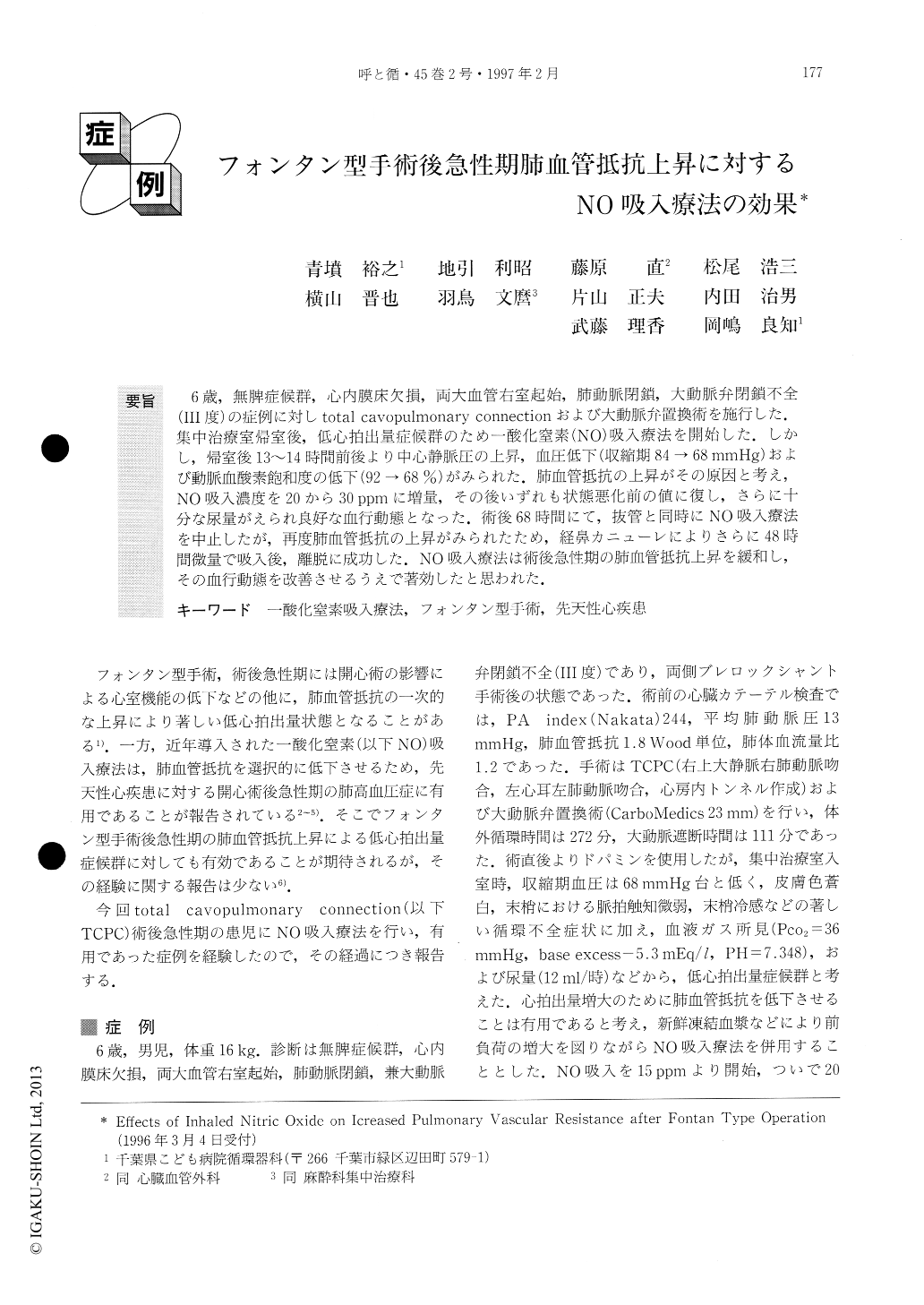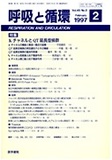Japanese
English
- 有料閲覧
- Abstract 文献概要
- 1ページ目 Look Inside
6歳,無脾症候群,心内膜床欠損,両大血管右室起始,肺動脈閉鎖,大動脈弁閉鎖不全(III度)の症例に対しtotal cavopulmonary colnnectionおよび大動脈弁置換術を施行した.集中治療室帰室後,低心拍出量症候群のため一酸化窒素(NO)吸入療法を開始した.しかし,帰室後13〜14時間前後より中心静脈圧の上昇,血圧低下(収縮期84→68 mmHg)および動脈血酸素飽和度の低下(92→68%)がみられた.肺血管抵抗の上昇がその原因と考え,NO吸入濃度を20から30 ppmに増量,その後いずれも状態悪化前の値に復し,さらに十分な尿量がえられ良好な血行動態となった.術後68時間にて,抜管と同時にNO吸入療法を中止したが,再度肺血管抵抗の上昇がみられたため,経鼻カニューレによりさらに48時間微量で吸入後,離脱に成功した.NO吸入療法は術後急性期の肺血管抵抗上昇を緩和し,その血行動態を改善させるうえで著効したと思われた.
We report a case of a 6-year-old boy with asplenia, double outlet right ventricle, endocardial cushion defects, pulmonary atresia and severe aortic insufficiency. Just after total cavopulmonary connection and aortic valve replacement, we diagnosed low output syndrome, and started inhalation of No at a concentra-tion of 15ppm. Thirteen hours after surgery, arterial oxygen saturation (SPo2) deteriorated from 92 to 68 % concomitant with a decrease in systolic blood pressure (BP) (66 mmHg) and an increase in central venous pressure (CVP) (13 mmHg), suggesting raised pulmo-nary vascular resistance. We increased the No concen-tration to 30 ppm, which resulted in an increase of BP to around 100 mmHg, SPo2 to 88 %, an increase in urine volume, and a decrease of CVP to 10 mmHg. Changes induced by NO remained stable during the next 20 hours.
Then we attempted to wean the patient from NO and extubated the endotracheal tube at 68 hrs after surgery. However, there was a rebound manifested by a decrease of Spo2 to 83% and increase of CVP to 12 mmHg. The patient was made to inhale a low dose (2 to 1 ppm) NO by nasal cannula for a further 48 hours. Thereafter the patient was able to be weaned from NO without any significant rebound phenomenon.
In this case, NO inhalation prevented hemodynamic deterioration due to increased pulmonary vascular resis-tance and kept the patient in a stable condition there-after. We concluded that inhaled NO is particularly useful in patients following Fontan-type procedure with temporary elevated pulmonary vascular resistance.

Copyright © 1997, Igaku-Shoin Ltd. All rights reserved.


